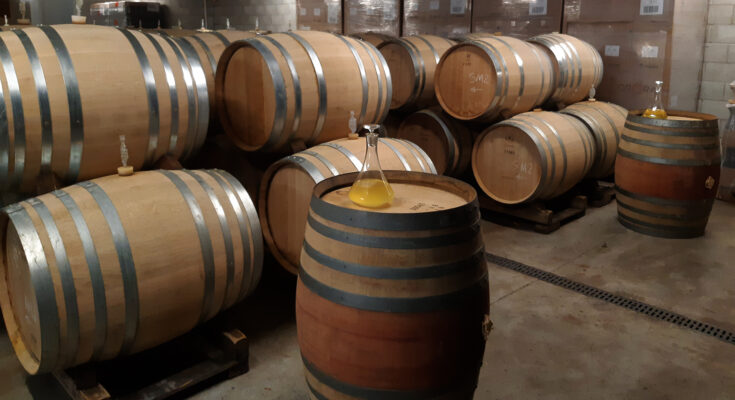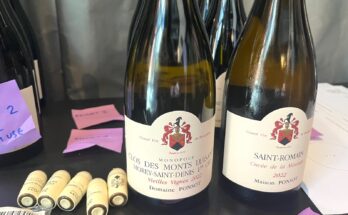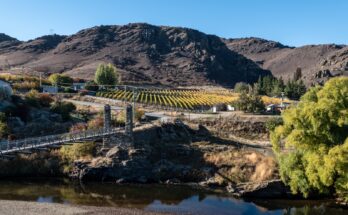As last year, I’m at Kumeu River in late July, to taste the new release Estate and single Vineyard Chardonnays as part of their CRU initiative for keen supporters to buy the wines on allocation.
We’re served a Kumeu River Cremant on arrival – this is now the fourth incarnation of their sparkling wine, with the first vintage made in 2012. Mostly from the 2015 vintage, spending three years on its yeast lees, and disgorged in December 2019. It’s a blend of 60% Chardonnay and 40% Pinot Noir, with a dosage of around 3.5 grams per litre. The final wine has ended up at 5%. At disgorgement a little older Kumeu River Chardonnay is added – this time the 2010 Estate Chardonnay got the nod. It’s a really delicious, refreshing dry sparkling wine, probably drier than many Brut-labelled Champagnes.
The brand new 2020 releases are from “an fantastically outstanding Vintage”. It was only 12 months ago that we heard from Paul, Milan and Michael about how wonderful the wines from 2019 were, but according to Paul “2020 has probably pipped them at the post”. A long, dry summer has added to the plushness in the wines on offer.
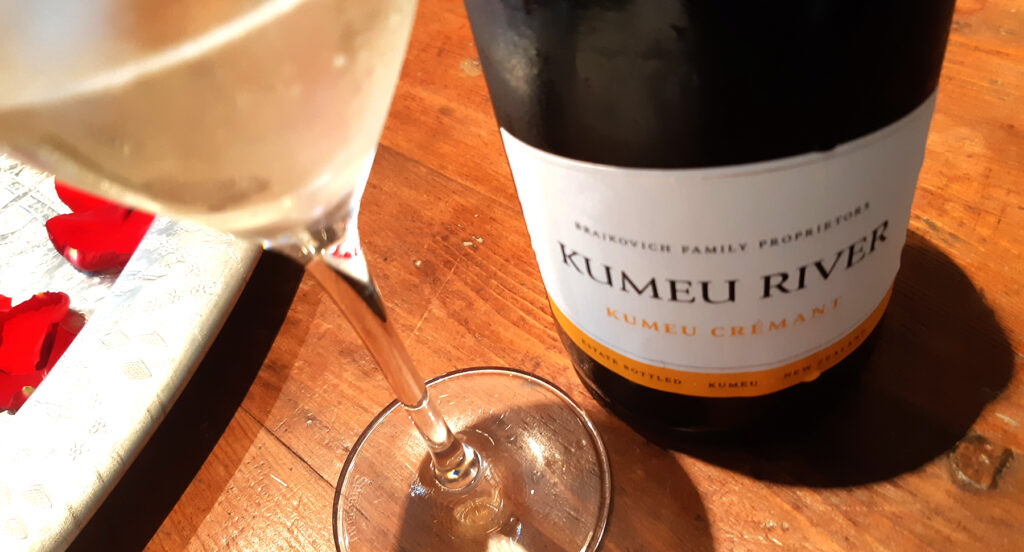
Everything at Kumeu River is made in a similar way – all hand-harvested, processed at the site at Kumeu, fermented using wild yeast, and most of the wines are put in oak barrels, with a varying degree of new oak. All go through 100% malolactic fermentation, and then aged on lees for about 11 months.
The first wine in the line-up is the one that was the first Chardonnay that the Brajkovich family made, of this nature – in 1985, and the one that has probably made the label’s international reputation – The Kumeu River Estate Chardonnay. This wine has always been a selection of the best of the Kumeu sites – the single vineyard expressions came later on. Not all the vineyards that go into the Estate are owned by Kumeu River, and one of the vineyards that used to provide fruit for the Estate, on Trig Road, has now been lost to property development.
The 2020 sees 20% new oak, as in previous years, but shows it a little more than usual, with a spiced nose of cardamom, citrus, chamomile, elderflower and toasted cashews. Concentrated and slightly flinty with peach, yellow apple and greengage flavours. That oak warmth is tempered by a spritzy, grapefruit-edged acidity.
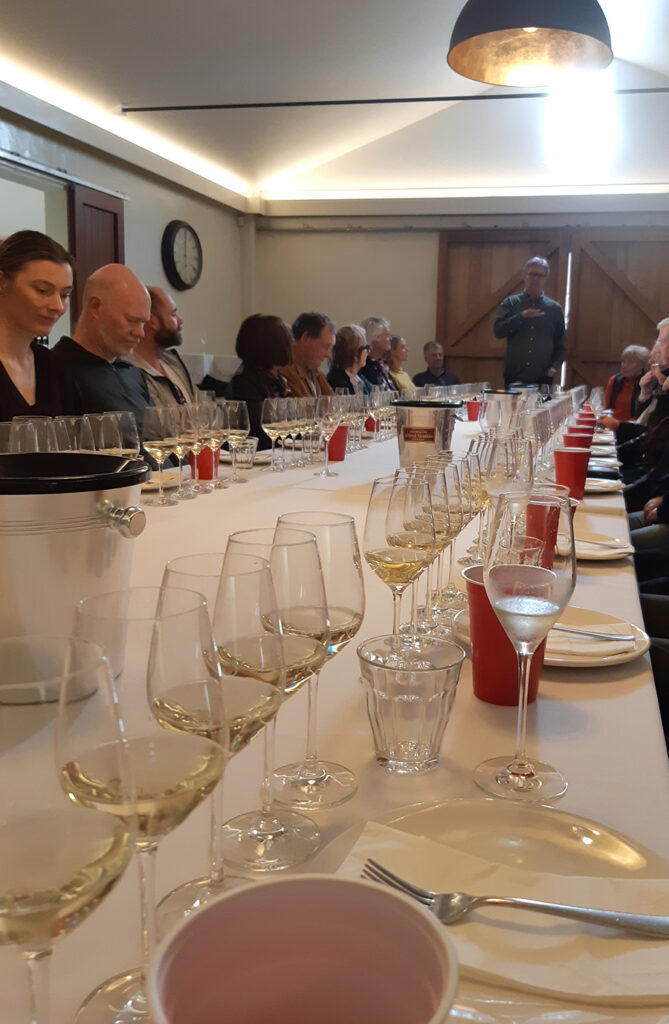
I’m always on alert to taste the Rays Road Chardonnay – from their developing limestone vineyard, inland on a fairly remote hillside at Ruakaka in Hawke’s Bay. Milan explains: “We have spent a bit of time over the last twenty years looking at spots, including in Hawke’s bay, and been interested in limestone, so when Paul saw this we rushed down and took a look. Unfortunately it was mostly planted with Sauvignon Blanc, but we’re fixing that problem!”
The vineyard now has 12 hectares replanted with Chardonnay, and is now being farmed without irrigation in an effort to drive the vine roots deep into the limestone to extract that mineral character. It’s definitely the one in the line up to pay close attention to – the jump up in quality is quite marked from 2018 to now.
Fermented in mostly well-seasoned barrels, it shows a taut oyster-shell chalkiness on the nose, with lemon blossom and hazelnut. On the palate it shows more of that distinctive flintiness but with a lime zest and a fleshy peach character. Zingy acidity puts a real spring in its step.
Mate’s vineyard has always been a single vineyard wine, but it was only in 2006 that the Coddington vineyard fruit was bottled as a single vineyard wine. On heavy clay, a north-facing suntrap, it’s a step up from the first two, with the ripest, richest character of all the wines. The yield in 2020 is down about 25% due to a frost event in November – and Paul explains – “with all the mixed cases that have been prepared for the CRU members in the last month, it’s used up all the Coddington, so there’s basically none left”.
It is a very ripe, forward style of Chardonnay. There’s a vibrant acidity that balances the unctuous fruit character. Pear, stone fruit and a bright minerality. Good, obvious, toasty oak that suits the character. I’m happy with it now, but it will harmonise more over time in bottle.
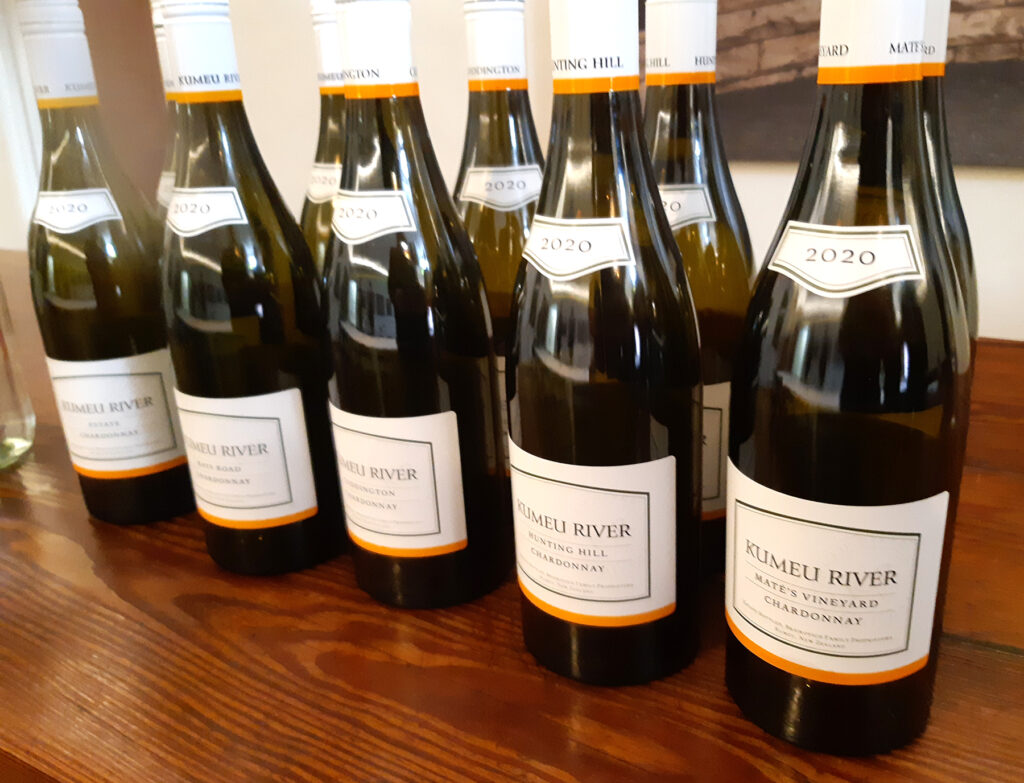
Hunting Hill is the vineyard that sits above Mates Vineyard, across the road from the winery, and elevated, so a slightly cooler site. A very fragrant style, with a distinctive lemon/lime blossom fragrance. Long and persistant on the palate, it is often quite close-knit and taut at first, but this year seems supple and ready to go. Citrus, tarragon, crisp and linear, with roast chestnut, peach and crushed oyster shell minerality amongst the layers of flavours. Leaner and less showy than both it’s Kumeu neighbours, but with a finesse that often makes it people’s favourite. The persistant floral character keep going right through to the long, slightly quartz-like finish.
Originally thought of as a source block for the Estate Chardonnay, but from the first vintage of 1993 Paul describes Mate’s Vineyard as being “significantly different, it warranted to be left on its own – and as it’s gotten older, it’s gotten better. After ten years we saw a step up and after twenty years another step up again. It’s certainly the most densely concentrated Chardonnay of all the wines we make.”
It has usually been my favourite of the range with a brooding depth to it that even its siblings can’t match. Michael notes that “This is 100% Mendoza, which has a propensity to have hen and chicken berries, with full size berries and tiny little intensely flavoured ones – and that’s part of the concentration.”
Smoky and concentrated with notes of preserved lemon, biscotti and nectarine. Floral with spring flowers, and a powerful richness on the palate. Flinty, juicy with golden peach, oatmeal, nougat and freshly sliced pear. It shows real finesse – the oak is gorgeous and opulent, contrasting with the spine of tensely coiled acidity. Elegant, infinitely desireable. Happy to have decided on having a few of these in my CRU box.
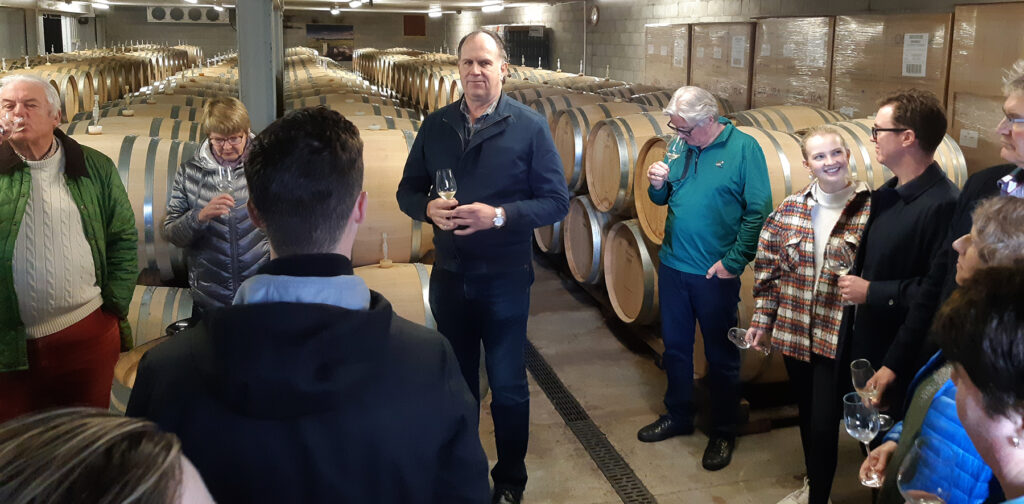
We end the session with a trip down to the barrel hall to taste some of the 2021 wines. Last year there was a Mate’s from a single new barrel that blew me away with the power and personality – this year Michael has chosen samples from a few barrels in advance in order to present a more balanced view than can be gained from a single barrel example. However, the 2021 Hunting Hill was the wine that raised the hairs on the back of your arm this time. Given the growing popularity and notoreity of these Single Vineyard wines now, you might want to join the CRU to ensure you an access them in the future…

